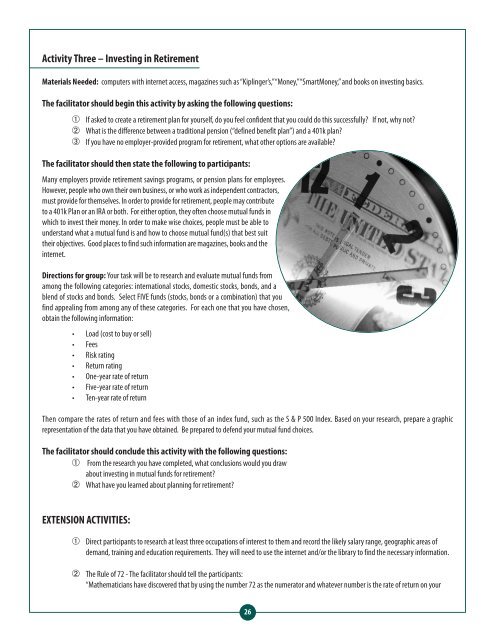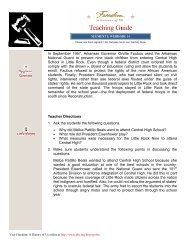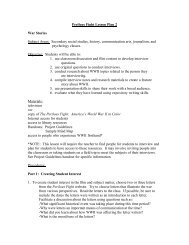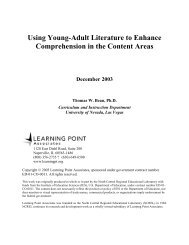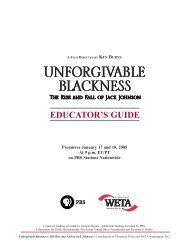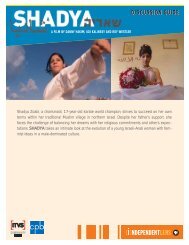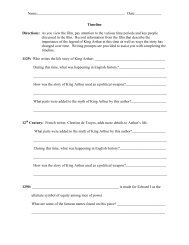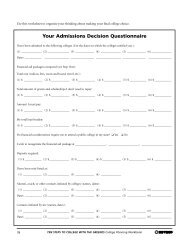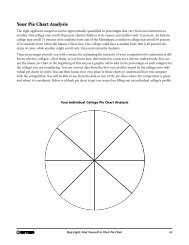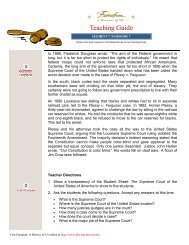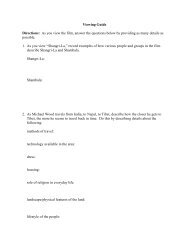Facilitator's Guide - PBS
Facilitator's Guide - PBS
Facilitator's Guide - PBS
Create successful ePaper yourself
Turn your PDF publications into a flip-book with our unique Google optimized e-Paper software.
Activity Three – Investing in Retirement<br />
Materials Needed: computers with internet access, magazines such as “Kiplinger’s,”“Money,”“SmartMoney,” and books on investing basics.<br />
The facilitator should begin this activity by asking the following questions:<br />
a If asked to create a retirement plan for yourself, do you feel confident that you could do this successfully?<br />
b What is the difference between a traditional pension (“defined benefit plan”) and a 401k plan?<br />
c If you have no employer-provided program for retirement, what other options are available?<br />
If not, why not?<br />
The facilitator should then state the following to participants:<br />
Many employers provide retirement savings programs, or pension plans for employees.<br />
However, people who own their own business, or who work as independent contractors,<br />
must provide for themselves. In order to provide for retirement, people may contribute<br />
to a 401k Plan or an IRA or both. For either option, they often choose mutual funds in<br />
which to invest their money. In order to make wise choices, people must be able to<br />
understand what a mutual fund is and how to choose mutual fund(s) that best suit<br />
their objectives. Good places to find such information are magazines, books and the<br />
internet.<br />
Directions for group: Your task will be to research and evaluate mutual funds from<br />
among the following categories: international stocks, domestic stocks, bonds, and a<br />
blend of stocks and bonds. Select FIVE funds (stocks, bonds or a combination) that you<br />
find appealing from among any of these categories. For each one that you have chosen,<br />
obtain the following information:<br />
• Load (cost to buy or sell)<br />
• Fees<br />
• Risk rating<br />
• Return rating<br />
• One-year rate of return<br />
• Five-year rate of return<br />
• Ten-year rate of return<br />
Then compare the rates of return and fees with those of an index fund, such as the S & P 500 Index. Based on your research, prepare a graphic<br />
representation of the data that you have obtained. Be prepared to defend your mutual fund choices.<br />
The facilitator should conclude this activity with the following questions:<br />
a From the research you have completed, what conclusions would you draw<br />
about investing in mutual funds for retirement?<br />
b What have you learned about planning for retirement?<br />
EXTENSION ACTIVITIES:<br />
a Direct participants to research at least three occupations of interest to them and record the likely salary range, geographic areas of<br />
demand, training and education requirements. They will need to use the internet and/or the library to find the necessary information.<br />
b The Rule of 72 - The facilitator should tell the participants:<br />
“Mathematicians have discovered that by using the number 72 as the numerator and whatever number is the rate of return on your<br />
26


